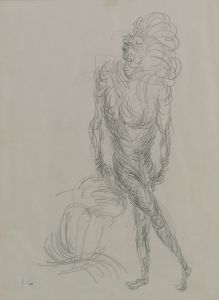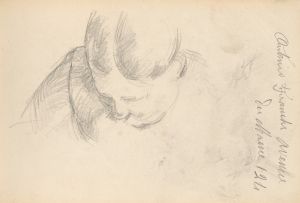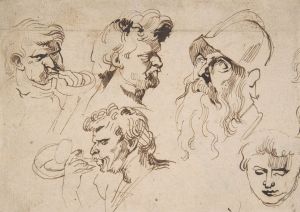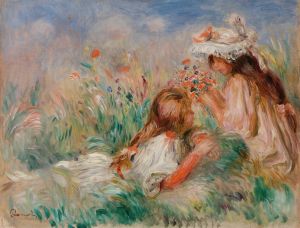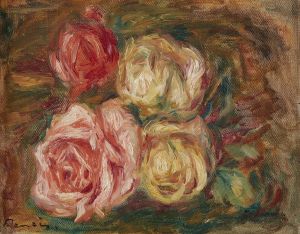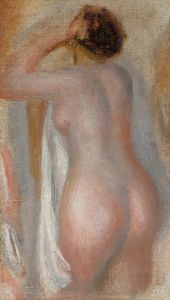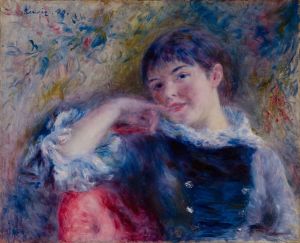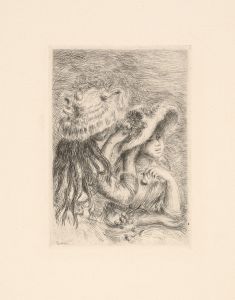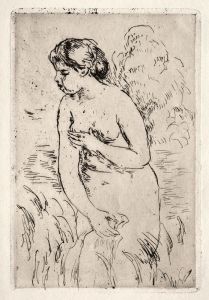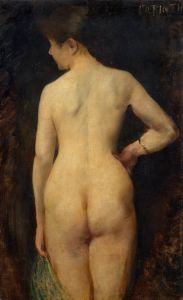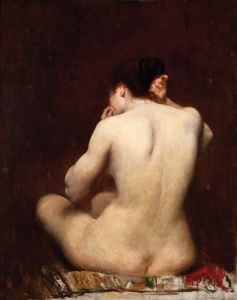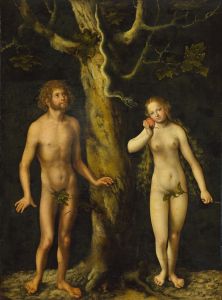
Large Nude
A hand-painted replica of Pierre-Auguste Renoir’s masterpiece Large Nude, meticulously crafted by professional artists to capture the true essence of the original. Each piece is created with museum-quality canvas and rare mineral pigments, carefully painted by experienced artists with delicate brushstrokes and rich, layered colors to perfectly recreate the texture of the original artwork. Unlike machine-printed reproductions, this hand-painted version brings the painting to life, infused with the artist’s emotions and skill in every stroke. Whether for personal collection or home decoration, it instantly elevates the artistic atmosphere of any space.
Pierre-Auguste Renoir, a leading figure in the Impressionist movement, is renowned for his vibrant light and saturated color, most often focusing on people in intimate and candid compositions. Among his many works, "Large Nude" stands out as a significant piece, showcasing his mastery in depicting the human form with a sense of warmth and sensuality.
"Large Nude," painted in 1907, is a testament to Renoir's evolving style during the later years of his career. This period marked a departure from the more spontaneous brushstrokes characteristic of his earlier Impressionist works. Instead, Renoir adopted a more classical approach, emphasizing form and volume, which is evident in this painting. The artwork features a reclining female nude, a subject that Renoir frequently explored throughout his career. The model is depicted with a soft, voluptuous form, rendered in warm, glowing tones that highlight the artist's fascination with the beauty of the human body.
Renoir's technique in "Large Nude" reflects his admiration for the works of earlier masters, such as Peter Paul Rubens and Titian, who also celebrated the sensuality of the human form. The painting's composition is carefully constructed, with the figure occupying a significant portion of the canvas, drawing the viewer's attention to her serene expression and the gentle curves of her body. The background is kept relatively simple, allowing the figure to stand out, while the use of light and shadow adds depth and dimension to the scene.
During the time "Large Nude" was created, Renoir was experiencing significant physical challenges due to rheumatoid arthritis, which severely affected his ability to paint. Despite these difficulties, he continued to produce art with the help of assistants who would place the brush in his hand. This determination to continue working is reflected in the meticulous detail and vibrant energy of "Large Nude."
The painting is part of a broader series of nudes that Renoir produced in the early 20th century, which are often referred to as his "late nudes." These works are characterized by their robust figures and a return to classical themes, showcasing Renoir's enduring interest in the human form and his ability to adapt his style to accommodate his changing physical abilities.
"Large Nude" is housed in the Musée de l'Orangerie in Paris, where it continues to be admired by visitors from around the world. The painting is celebrated not only for its aesthetic qualities but also as a reflection of Renoir's resilience and passion for art. Through this work, Renoir's legacy as a master of color and form endures, offering insight into his artistic journey and the evolution of his style over the decades.





